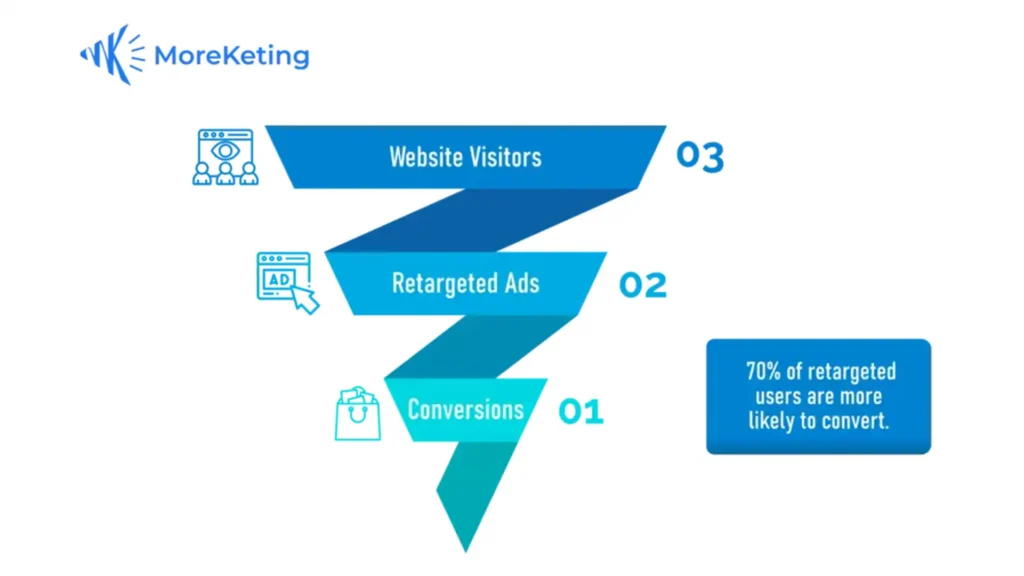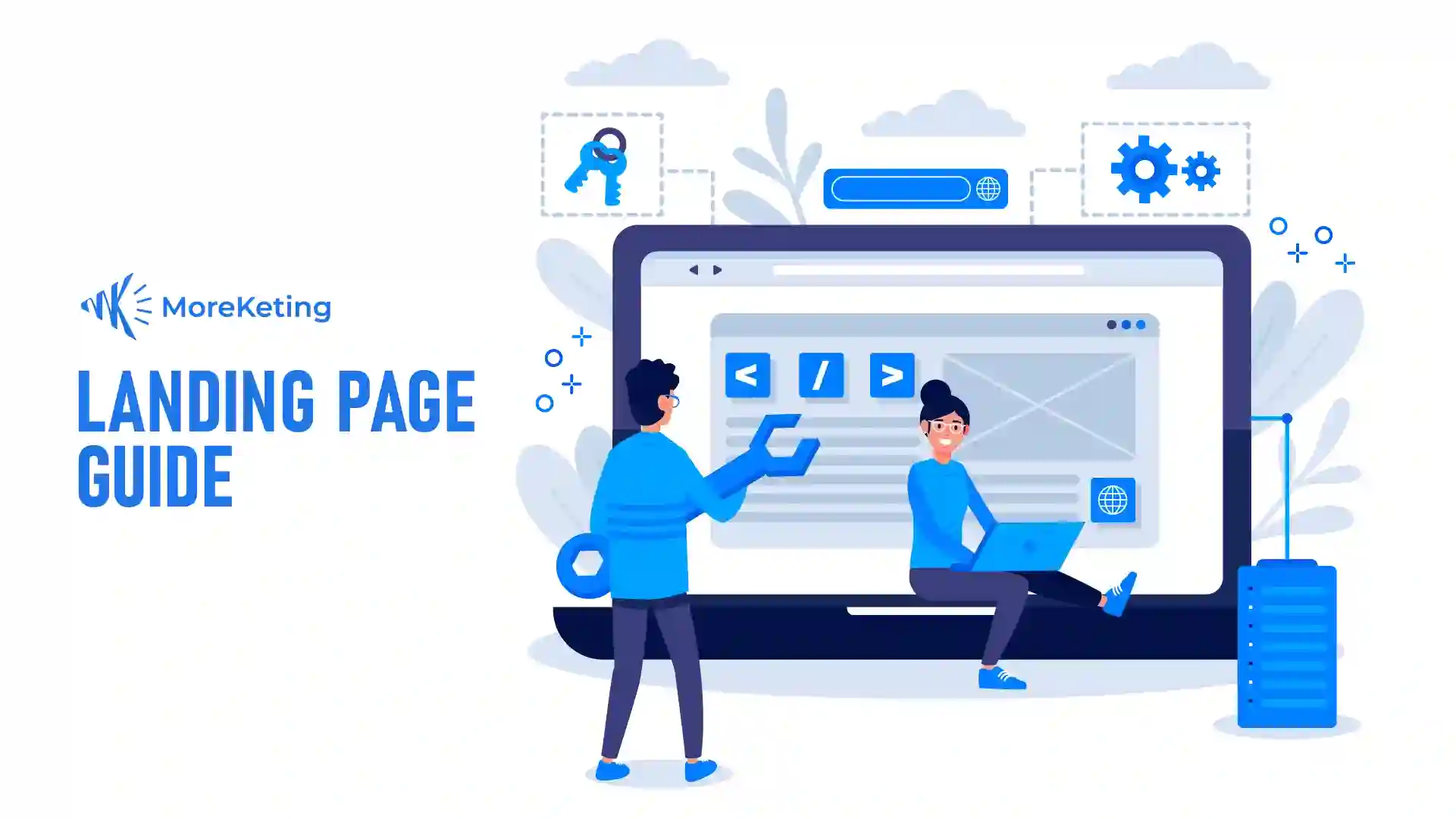Retargeting marketing is the strategy of showing ads to people who have already interacted with your website or social media. The way it functions is by consistently reminding your audience about your identity and the services or products you provide.
This process involves creating several opportunities, or touch points, for engagement that enhance the likelihood of them returning to you. By doing so, you increase their chances of making a purchase or taking a desired action. This approach helps to maintain their interest and keeps you at the forefront of their minds, ultimately leading to a higher conversion rate.
What is retargeting marketing?
Retargeting, also known as remarketing, is a form of online advertising that allows you to reconnect with people who have previously interacted with your brand or product. It’s a way to reach people who have already had some interaction with your company and encourage them to move further down the funnel.
Retargeting campaign is when advertisements are displayed to people who have previously visited your website when they are on other sites on the web. This is a gentle remind about both your brand as well as the valuables you offer, whether that is things you can buy or actions that can be taken.

The point is to stay on their radar, and get them to return for a second peek at your brand. Unlike the kind of general ads we’ve covered in the past, which are centered around generating new leads, retargeting relies on established visitors for a higher success rate. So, in other words, you are advertising to a “warm” audience, who has already indicated some interest in what you’re offering.
How does it work?
Retargeting works thanks to small data files called cookies. These are like the crumbles that lead people back to you.
Here’s how it works step by step:
- A visitor lands on your website.
- Their browser saves a small file (a cookie) with their activity.
- Later, while browsing other sites or social media, your ads appear again.
- This repetition reinforces memory and increases the chance of return visits.
Retargeting is about constantly reminding people about you. People rarely convert on the first interaction, sometimes it takes 5, 10, or even 56 touch points before a decision is made.
Why You Should Be Retargeting in Your Marketing?

The majority of users don’t buy the first time they go to a website. They get sidetracked, shop around, or just require more time. Retargeting maintains brand exposure during that process, and it also serves as a very clear reminder to people that your brand is out there.
Key Benefits
- Higher Conversion Rates: Retargeted audiences are also more likely to convert than those that are not, with up to 70% higher probability of conversion than first-time visitors. This is an example how a small push can have a great effect in transforming interest into action. Improved
- Brand Recognition: According to a study by Semrush, as people see the retargeting ads from your brand over and over, will prompt recognition of the brand and potential trust.
- Cost Effective Ad Spend: Retargeting helps ensure that you can use your ad budget efficiently, spending it on people who have already expressed an interest in your business as opposed to cold audiences who may never click on your ad.
- Cross-Channel Exposure: Brands can show up on various websites, Google, social network platforms, etc, to remain in your mind. In addition, using multiple channels will allow your message to reach the right people wherever they spend time online, according to Semrush.
Types of Retargeting Campaigns

- Website Retargeting: Website retargeting is when an ad is displayed to someone who had visited your website but did not take action.
- Social Media Retargeting: Facebook, Instagram, LinkedIn, etc. All make it possible to retarget users who engaged with your posts, videos or ads. Even if users never visited your website, retargeting through social media helps keep your brand top-of-mind and improves the likelihood of engagement.
- Email Retargeting: Let you reconnect with people who signed up for your newsletter or started a form but didn’t complete it. According to HubSpot, personalized emails can significantly boost open and click-through rates while guiding leads closer to a sale.
- Ads Marketing Retargeting: Paid campaigns on sites such as Google Ads permit you to retarget those who have already expressed an interest in your products and services. Targeted ad campaigns are cheaper than non-targeted or general ad campaigns because they concentrate on the people who specifically have demonstrated interest.
Basically, retargeting campaigns, be it on the web, social, email or ads, keep you in the face of interested audiences and lead them through the conversion funnel.
Best Practices for Effective Retargeting
- Segment your audience: Don’t show the same ad to everyone. Separate by behavior (visited pricing page vs. read a blog).
- Control frequency: People need multiple touch points, but bombarding them can create ad fatigue. Use strong CTAs: Always guide them to the next step (download, buy, book a call).
- Refresh creatives: Rotate designs and messages so ads don’t feel repetitive.
- Measure results: Track conversion rates and ROAS to optimize campaigns. Remind: people need to interact more. Retargeting is not about a single ad, it’s about the sequence of reminders that build trust.
FAQs





